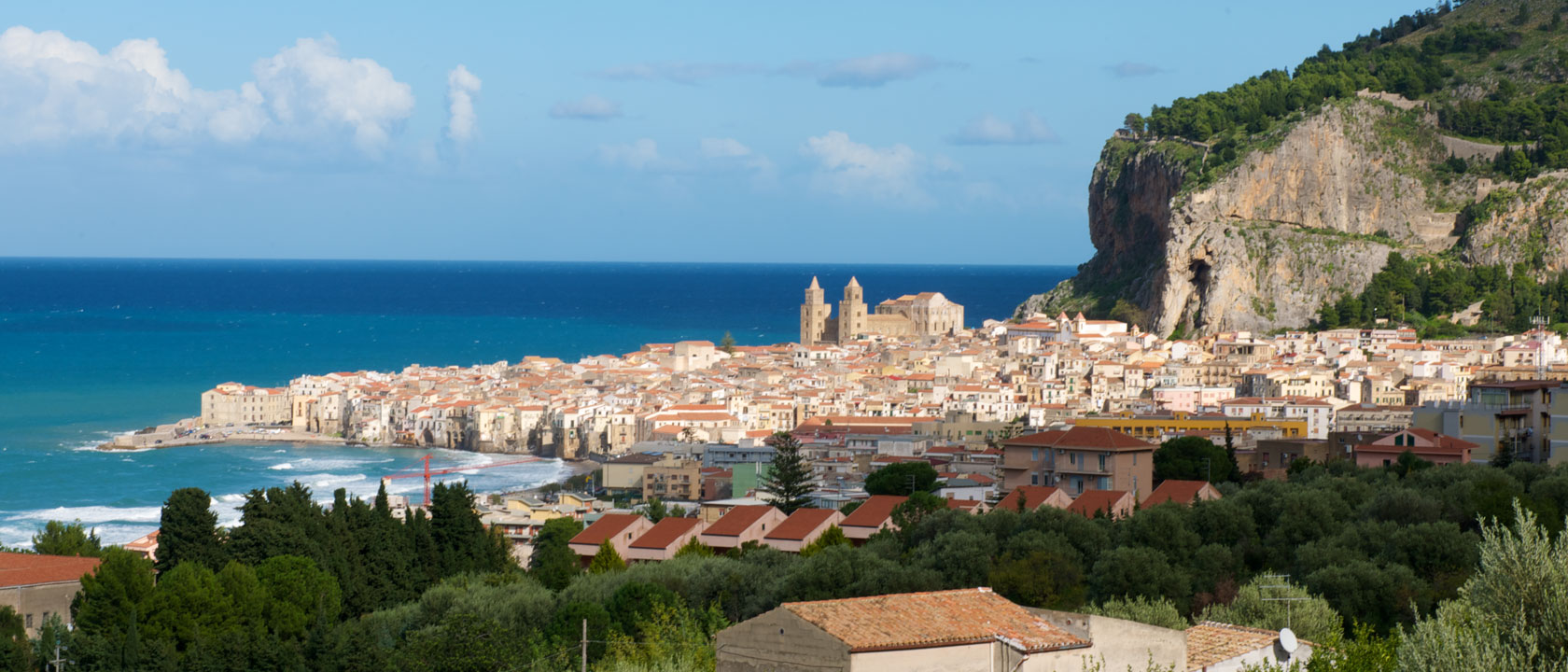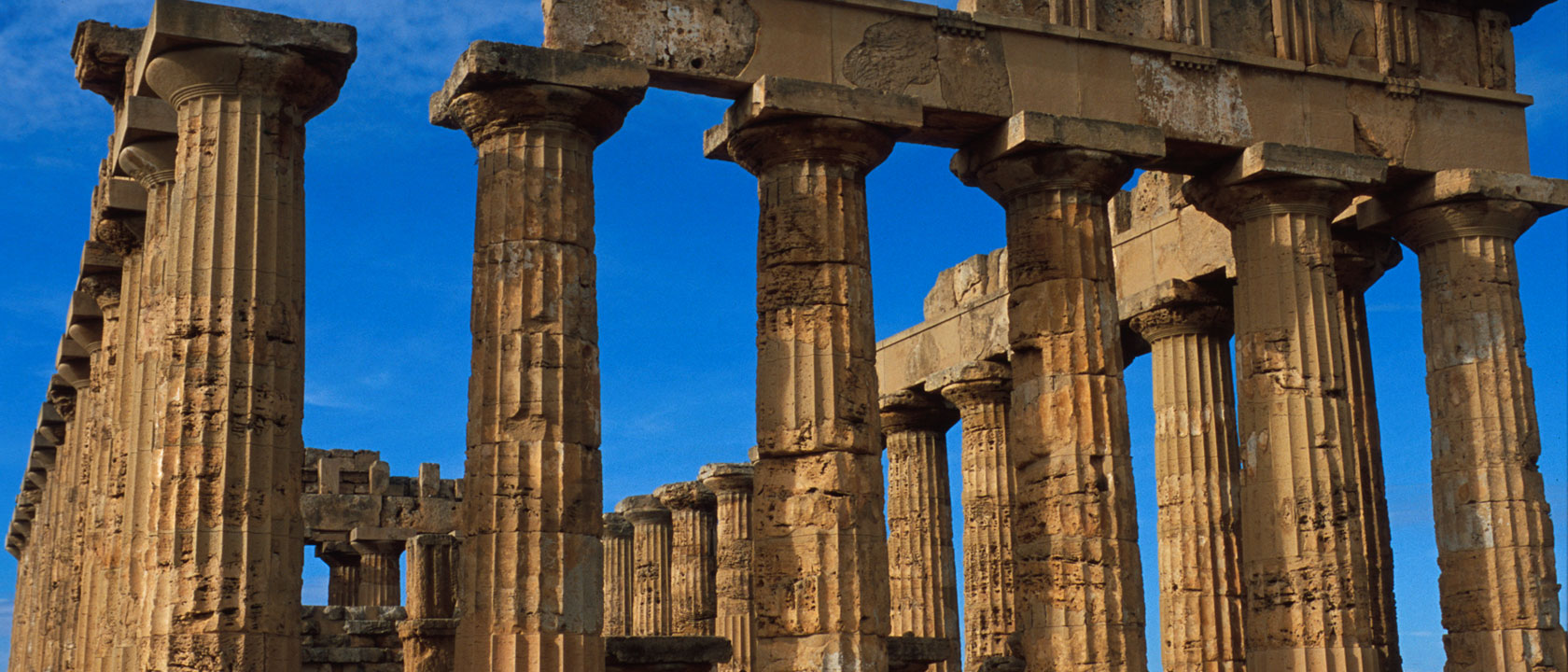The Wine Dark Sea: A Historical Introduction

Once, foreigners were drawn to Southern Italy and Sicily by the riches to be garnered from their fertility and their strategic position at the centre of the Mediterranean trading world. Since 1800, they have offered outsiders sparkling coasts, moody mountain panoramas and a bewildering and fascinating variety of eastern, European and local cultural forms. Our tour is inspired by this extraordinary mix of dramatic landscape and distinctive culture. It explores a palimpsest, in which different peoples in successive epochs have each added their own distinctive languages, narratives, plants, buildings, art works, festivals, dances and dishes to a picturesque landscape of volcanoes, cliffy shores, broad plains, rocky escarpments and sheltered harbours; all set against Homer’s “wine-dark sea”.
Its history, socio-economic conditions, art, literature, food and wine – indeed its very culture – carve out Southern Italy as another country from the more fertile, prosperous and Renaissance-resonant north. The sun burns more brightly in the south, and the people are both warmer and more wily – honed not just by the sun’s rays but by centuries of invasions, domination and just getting by. It is this rich cultural difference, its origins and outcomes that will be brought to life on this tour through an exploration of southern history, art, literature and lifestyle.
Southern Italy and Sicily occupy a key strategic position in the Mediterranean, mid-way between the Levant and the Strait of Gibraltar. From Classical Antiquity until the Renaissance, when the Mediterranean was the centre of the Western world, their location made them prizes for settlers and conquerors like the Greeks, Phoenicians, Romans, Byzantines, North African Muslims, Normans, French and Spaniards. Their harbours were important emporia for trade between the Middle East, North Africa and Europe. Their high mountains harboured impregnable fortresses, and on their fertile coastal plains were cultivated cereals and olives, as well as crops imported from Africa and the East, such as oranges, lemons, dates and figs. Their fertility attracted Greek colonists, who located famous myths in Sicily’s moody landscapes. Phoenicians founded trading cities, drawing Sicily into a vast Mediterranean trade network. They were eventually defeated by the Romans who grew grain in Sicily and founded resorts along the sparkling seashores south of Naples. The ensuing centuries witnessed catastrophic wars between barbarians, Byzantines, North African Muslims, Popes, Lombard aristocrats and trading cities like Amalfi. Trade flourished, however, and Sicily became a cosmopolitan centre of statecraft, art and learning under the North Africans and then the Normans, who also controlled Apulia on Italy’s heel. Arguably, the region reached its apogee under the Normans and the Holy Roman Emperor, Frederick II. The Normans built an unequalled group of Apulian cathedrals and highly experimental Sicilian chapels, churches and palaces. These blended Eastern and Western forms, lustrous Byzantine mosaics and scintillating Muslim inlays of precious stones. Frederick built powerful fortresses like Castel del Monte, whose plan was inspired by Persian sacred geometry.
During the Renaissance, wealth and power slowly shifted to Europe’s Atlantic seaboard leaving Southern Italy and Sicily stranded as backwaters, invaded and then heavily taxed by Spanish and French overlords. Despite its poverty, the region produced an aristocratic visual culture of great, if at times melancholic, beauty and vital, popular customs of the down-trodden, exploited peasantry. Naples, Apulia and Sicily retain the stunning southern Baroque architecture which turned their cities into dramatic stage sets. Lovely old palaces form the settings for Giuseppe di Lampedusa’s great novel, The Leopard. Peasant culture (explored in Giovanni Verga’s novels such as Mastro Don Gesualdo) flowered in a unique story-telling tradition, in puppet-show epics of Medieval Knights performed by tin-armoured marionettes, and in elaborate Christmas cribs. Today, these regions may be considered backwaters by Northern Italians and yet, the plays and novels of southerners like Lampedusa, Luigi Pirandello, Carlo Levi and Leonardo Sciascia, dominate modern Italian literary history.

 Sicily and the Aeolian Islands 2025
Sicily and the Aeolian Islands 2025